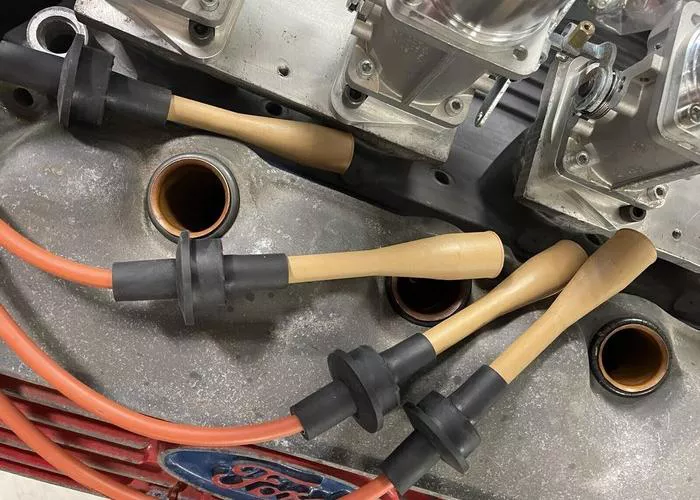What is the Diaphragm Pressure Instrument? Diaphragm pressure instruments are critical components in modern industrial measurement and control systems. They are specifically designed to measure pressure using a flexible diaphragm that deforms in response to changes in pressure. This deformation is then translated into readable values by mechanical or electronic means. These instruments are widely used due to their sensitivity, accuracy, and ability to measure both low and high pressures effectively.
How Diaphragm Pressure Instruments Work
A diaphragm pressure instrument operates by the principle of elastic deformation. The core component is a diaphragm, typically made from metal or elastomer, which flexes when subjected to pressure. The amount of deflection is directly proportional to the pressure applied. This deflection is either mechanically linked to a needle or electronically converted to an electrical signal, depending on the type of instrument.
Key Components:
- Diaphragm: The sensing element.
- Transmitter: Converts mechanical movement to a readable signal.
- Housing: Protects the internal components.
- Pressure Ports: Entry and exit points for the process fluid.
Types of Diaphragm Pressure Instruments
Diaphragm pressure instruments come in various types depending on the application and design. Each type offers unique advantages suited to different industrial requirements.
1. Mechanical Diaphragm Gauges
These gauges use mechanical linkages and are often analog. They are commonly used in scenarios where digital output is not necessary and where ruggedness is a priority.
2. Electrical Diaphragm Transmitters
These utilize strain gauges or piezoelectric elements to convert pressure changes into an electrical signal. They are suitable for automation systems and remote monitoring.
3. Differential Diaphragm Pressure Instruments
These measure the difference between two pressures and are essential in flow and filtration applications. They often use a dual-diaphragm system to maintain accuracy.
Advantages of Using Diaphragm Pressure Instruments
There are several benefits to using diaphragm pressure instruments, making them a preferred choice in many industries.
- High Accuracy: They provide precise readings, which is essential for quality control and safety.
- Wide Pressure Range: Suitable for both low and high-pressure measurements.
- Corrosion Resistance: Diaphragms can be made from materials resistant to aggressive media.
- Compact Design: Their small size allows for easy integration into existing systems.
- Cost Efficiency: Long-term reliability reduces maintenance costs.
Applications Across Industries
Diaphragm pressure instruments are used in a multitude of sectors due to their versatility and reliability. Here are some key industries where they are essential:
1. Oil and Gas
In this sector, diaphragm instruments monitor pressure in pipelines and processing equipment. Their ability to withstand harsh conditions and provide real-time data is crucial.
2. Chemical Processing
Chemical plants use diaphragm instruments for corrosive and toxic fluids. The diaphragm can be coated with protective layers to resist chemical attack.
3. Food and Beverage
Hygienic diaphragm pressure instruments are essential in this industry to ensure product safety and compliance with health standards.
4. Water Treatment
These instruments help monitor pressure in filtration and distribution systems, ensuring efficient operation and safety.
5. Pharmaceuticals
Diaphragm pressure instruments are vital in ensuring the precision and cleanliness required in pharmaceutical manufacturing.
Selection Criteria for Diaphragm Pressure Instruments
Choosing the right diaphragm pressure instrument involves several factors that ensure optimal performance and longevity.
- Pressure Range: Select an instrument capable of handling the maximum and minimum pressure levels.
- Material Compatibility: Ensure the diaphragm and housing materials are resistant to the media being measured.
- Environmental Conditions: Consider temperature, humidity, and exposure to corrosive substances.
- Output Requirements: Determine whether mechanical readouts or electronic signals are needed.
- Mounting and Installation: Choose a design that fits the existing setup without requiring major modifications.
Installation Guidelines
Proper installation of diaphragm pressure instruments is essential to guarantee accurate measurements and instrument longevity.
- Location: Install in an area free from vibrations and extreme temperatures.
- Orientation: Mount according to manufacturer recommendations to avoid zero-shift errors.
- Sealing: Use appropriate gaskets and sealants to prevent leaks.
- Calibration: Calibrate after installation to ensure accuracy.
- Protection: Install protective covers if the instrument is in a hazardous environment.
Maintenance and Troubleshooting
Routine maintenance ensures that diaphragm pressure instruments function reliably over time. Troubleshooting common issues quickly can prevent system failures.
Maintenance Tasks:
- Regularly inspect for physical damage or corrosion.
- Calibrate periodically to maintain accuracy.
- Clean the diaphragm gently to remove any buildup.
Troubleshooting Tips:
- Inaccurate Readings: Check for diaphragm clogging or calibration drift.
- No Output Signal: Inspect wiring and connections for faults.
- Fluctuating Signals: Investigate pressure surges or unstable fluid conditions.
Common Challenges and Solutions
While diaphragm pressure instruments are robust, they can face certain challenges in demanding applications. Knowing these helps in proactive management.
- Clogging: Use flush diaphragms or isolation rings in slurry applications.
- Corrosion: Choose appropriate materials like Hastelloy or Tantalum for aggressive media.
- Temperature Extremes: Utilize thermal isolators or capillaries to protect the diaphragm.
- Vibration: Mount on dampeners or use remote mounting options.
Safety Considerations
Safety is paramount when dealing with pressure systems. Diaphragm pressure instruments must be selected and installed with a focus on operational safety.
- Always follow manufacturer safety guidelines.
- Use explosion-proof or intrinsically safe models in hazardous areas.
- Verify pressure ratings to prevent overpressure failures.
- Train personnel on proper use and emergency procedures.
Conclusion
Diaphragm pressure instruments are indispensable tools in industrial pressure monitoring. Their accuracy, versatility, and reliability make them suitable for a wide array of applications, from chemical processing to food production. Understanding their working principle, selection criteria, and maintenance practices ensures optimal use and longevity. As technology progresses, these instruments are set to become even more intelligent and user-friendly, further enhancing their value in modern industry.
By following this guide, professionals can make informed decisions about diaphragm pressure instruments, ensuring safe, efficient, and accurate pressure monitoring in their respective fields.

